2008: The father of percussion
Shankar Iyer | burmanfan@gmail.com
The evening of 7″ February 2008, an evening to cherish at Mumbai’s Dinanath Mangeshkar Hall in Vile Parle was an evening singularly dedicated to the industry’s stalwart The father of percussion player, late Cawas Lord. No were sold and the press widely publicized the ‘open to all music lovers’ programme.
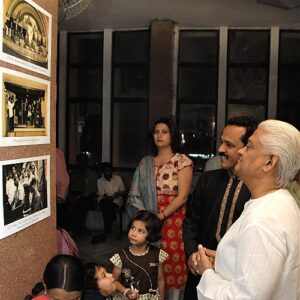 Remembrance of the genius musician:
Remembrance of the genius musician:
A Musician and Organizer Dinesh Ghate ‘Jain’ who conceived and executed this unique Swar Aalap presentation, declared that their remembrance of the genius musician and the father of percussions would be an energetic and entertaining evening, befitting the personality and musicality of the great musician. After all, Cawas Lord was a known prankster, responsible for the light atmosphere in the recording rooms with his quick wit, humour and practical jokes. So much was he in demand that music directors and musicians knew that if he was present in the recordings then everybody would be relaxed, in a good frame of mind and give their most creative output. That apart from being a class instrumentalist playing nearly all rhythm and percussion instruments with benchmarking skill.
The show kick started with the spelling out of Swar Aalap’s objectives of bringing credit to the numerous unknown and unsung musicians of India by Colleague Kushal Gopalka. Pyarelalji of LP duo grace the dais and address the 800 strong gathering about his cherished musical and personal dealings with the legendary instrumentalist whom he fondly addressed as Cawas ‘kaka’, a name which stuck with the veteran player. To the delight of the enraptured audience, he demonstrated with live playing the patterns and style of his beloved ‘kaka’s playing.
Music makers talking about the chief’s persona:
The evening’s programming was designed meticulously. Short pieces of information about the great musician and his output were interspersed with live performances of his songs on stage, clippings of audio and video songs on the screen and with musicians’ music makers talking about the chief’s persona.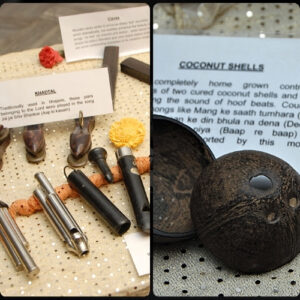 The beautiful touch of the Spanish Castanets, very evidently seen and heard in Naushad sahab’s Jadoo in 1951, Cawas Lord had, in fact, played it prior to that for many songs for C Ramchandra’s Samadhi, Sargam, etc. A Spaniard by the name of Peter Sartha had taught Cawasji, who in turn taught the instrument along with several others to numerous musicians of India.
The beautiful touch of the Spanish Castanets, very evidently seen and heard in Naushad sahab’s Jadoo in 1951, Cawas Lord had, in fact, played it prior to that for many songs for C Ramchandra’s Samadhi, Sargam, etc. A Spaniard by the name of Peter Sartha had taught Cawasji, who in turn taught the instrument along with several others to numerous musicians of India.
One such follower of his, Narendra Vakil came all the way from Valsad to join Swar Aalap in paying homage. This percussionist of yesteryears spoke fondly of his mentor and proceeded to play Castanets as they were played by Cawasji for OP Nayyar for Thandi hawa kali ghata and Ye lo main haari piya along with the band. Songs like Zameen se humen aasman par, Suno gajar kya gaye, Dil se milake dil pyar kijiye and the all-time great Jadoo favourite laara loo with its ‘passe doublez rhythm pattern were a great delight on the screen.
With the coming of Cawas Lord, it was as if a whole new world of creativity and inventive options had opened up for the Indian music directors. This is probably the reason why the 1950s and 60s’ songs (musical experiments) met with so much success. After all, he was an integral part of the music of Naushad, Shyam Sundar, C Ramchandra, SD Burman, Shankar Jaikishan, OP Nayyar, Roshan, Madan Mohan, RD Burman, Laxmikant Pyarelal and the like (so who was left out?)
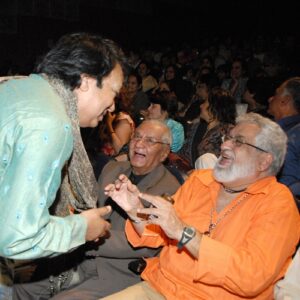
Chinese Temple Blocks, dubbed horrifically as ‘Khopdi Tarang’ are a series of 3 or 5 wooden blocks of varying sizes. The amazing sound effects on being struck by short wooden sticks in per mutable series were savoured in the demonstration of the instrument by respected percussionist Deepak Borkar. Songs Mora gora ang lai ley, Rahi too ruk mut jana, Rooth na jana tumsey kahoon to and Hai apna dil to awaara followed in either live performance or audio/video clips. All original versions contained Cawasji’s immaculate strokes and patterns.
Unparalleled record of a staggering 30000 songs:
The fantastic introduction of each instrument which was either introduced by ‘Cawas Lord‘ or played by him in the industry was well demonstrated by Deepak Borkar and elicited excellent audience response. The highly known and very Indian instrument, Manjeera and Latin percussion instrument Cabashe were represented by popular songs Tere mere milan ki ye raina and Kuchh na kaho to the increasing delight of the audience. People were naturally shocked at the quality and quantity of the colossal output of this unheard-of and unseen musician whose artistry had given them and continues to do so, much pleasure. Cawasji’s output of playing in recordings of Hindi films alone could easily be an unparalleled record of a staggering 30000 songs. It remains a fact that the senior Lord (followed by the juniors) has never hankered for the slightest publicity. The Lords have never spoken about their work or achievements.
Well-loved Playback singer and terrific Guitar player, Bhupindra Singh was on stage next, sharing some of his cherished intimate memories of the maestro. He re-endorsed about Cawas kaka being a ‘metronome an instrument which is used by musicians to remain in perfect tempo. Bhupiji’s supreme singing was enjoyed in the following song Rut jawaan from Aakhri Khat. The playback of the original recording of this forgotten Khayyam gem not only highlighted the side drum gloriously played by Cawasji, but the lush Piano Accordion of son Kersi Lord and the sweet and intelligent Vibraphone of younger son Buji Lord, besides the excellent arrangement and melody of the number. This innovative player, who brought the
western instrument -Drum Set to Indian song with Aana meri jaan Sunday ke Sunday in 1947, should be recognized as an institution and documented as an important chapter of Indian history. This Dadasaheb Phalke awardee was an all-rounder rhythm player. If the audience thought only of western percussions when they visualized the Lord,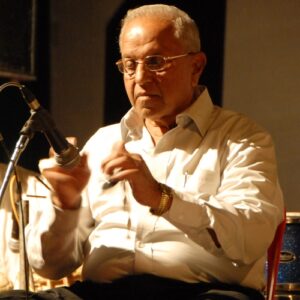
their notions were shaken when they heard those amazing dancing Ghunghroos from the next lot of songs performed and played on stage O jaanewale baalamva laut ke aa, Ab aage teri marzi, Le ke pehla pehla pyar, Jiya le gayo ji mora sanwariya, Mohe panghat pe nandlal, Laaga chunri mein daag, Madhuban mein Radhika, etc. Accompaniment in the Indian dance bells by Cawasji, keeping wonderful pace and harmony with actual Ustads in the above classic numbers.
Cawasji carried a bag full of percussion:
Deepak Borkar’s demonstrations of odd-looking contraptions like Chocolo, Triangle, Resso-Resso, Claves, etc continued to tickle the fancy of people present on and off stage. It was revealed that Cawasji carried a bag full of percussion instruments to each recording. The music director would confirm what Cawas would play and all the other players including the junior Lords would be assigned one instrument or the other from the bag Cawasi would laboriously teach them how and what to play. that’s how the industry got so many of his students and followers.
The Tambourine based Mera Joota hai Japani, the Khadtaal based Jai jai Shiv Shankar, the Maracas based Aapki aankon mein kuchh and Mera kuchh samaan, the Coconut shells evoked horse hoof- steps Bachpan ke din bhula na dena and Mera salaam le jaa and the Wood Blocks centric Aji dil pe hua aisa jadoo, Taareef karun kya uski and Deewana hua baadal left the energetic audience gasping for more.
Special applause was generated by popular Piano Accordion player Suraj Sathe whenever his solo pieces came. The acoustic Piano on stage being played by Chitti Pillai received excellent response. This was sponsored by leading music instrument suppliers Furtados. A totally new side of Cawasji was exposed with the effects section. The swany whistle and motor horn in Baboo samjho ishaare, the birds chirping at the start in Aa chal ke tujhe and Kuchh dil ne kaha, the bells in Kahin door jab and the whistle in Hum dono do premi took all the listeners by surprise.
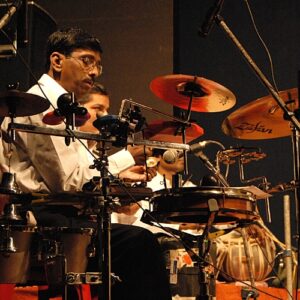
It was now time for the evergreen musician Manohari Singh reminiscing another great musician. Dada obliged his fans playing the Saxophone for Gulaabi aankhen for which his revered Cawas kaka had played superlative Bongo. It was heaven to listen and the audience gave a befitting five-minute standing ovation to a sentimental Manoharida.
The father of percussion trends:
The Bongo instrument of Latin American origin is usually grasped between the legs and played seated on a chair or stool. The father of percussion trends in the industry indeed brought in the Bongo to the Indian song. Cawas Lord, who established not only the two drummed wonder in India, but also its playing, its patterns, its tonality and most importantly, influenced the music directors to create songs fusing the Bongo as a main rhythm component of the Indian film song. That all started in the forties with the highly experimental C Ramchandra, although Cawasji is reported to have also played in the background score of the historical first ‘talkie’ film of India Alam Ara in 1931.
The selection of the songs was like Aaja Aaja Mein Hoon, Andaaz mera mastana, Zindagi khwab hai, Gori zara hans de tu, Jaata kahaan hai deewane, Khoya khoya chand, Itna na mujhse tu pyar badha, Ab to hai tumse, Meet na mila re man ka, Aa jaane jaan, Ye raat ye chandni phir kahaan, Mere toote huye dil se, Aaiye meherbaan, Gore gore o baanke chhore, Shola jo bhadke, Roop tera mastana, Teri duniya mein jeene se, O nigahen mastana and a host of beautiful others. The programme did seem like an ‘edutainment’ show based on a relatively unknown musician; the Swar Aalap offering 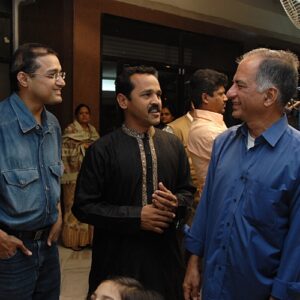 was definitely a huge success. Younger son Buji Lord obliged, sketching out the strict disciplinarian and demanding teacher that his father was. He described him as a perfectionist and hard task master. The deep sense of gratitude expressed by him for Swar Aalap was the climax of the evening before the curtains came down on stage. The audience proceeded for a final ‘dekko’ of the gallery in the foyer decorated painstakingly with Cawasji’s own instruments and rare photographs.
was definitely a huge success. Younger son Buji Lord obliged, sketching out the strict disciplinarian and demanding teacher that his father was. He described him as a perfectionist and hard task master. The deep sense of gratitude expressed by him for Swar Aalap was the climax of the evening before the curtains came down on stage. The audience proceeded for a final ‘dekko’ of the gallery in the foyer decorated painstakingly with Cawasji’s own instruments and rare photographs.
Special mention must be made of the fantastic team of stage musicians lead by Guitarist Ajay Madan. The players were Percussions: Deepak Borkar, Assistant: Manoj Pandya, Tabla: Prakash Wadekar, Conga/ Dholak: Vasu Mhatre, Octapad: Vijay Jadhav, Accordion: Suraj Sathe, Saxophone: Nandkishor Ambetkar, Piano: Chitti Pillai, Bass Guitar: Manish Kulkarni, Keyboard: Milind Dabholkar. The singers were Asmita Sawant, Kavita Rajwansh and Rajesh lyer.
The typical audience feedback was that they were now aware of the instruments used and that they looked forward to recognizing them each time they heard a song. How rewarding!


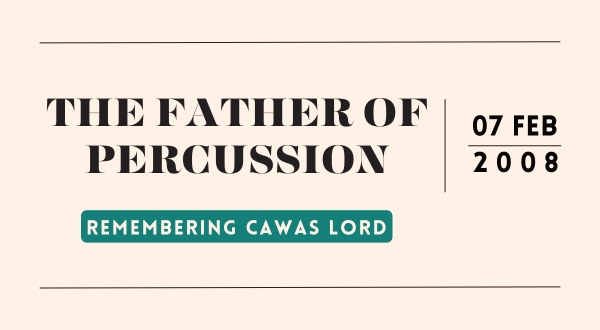
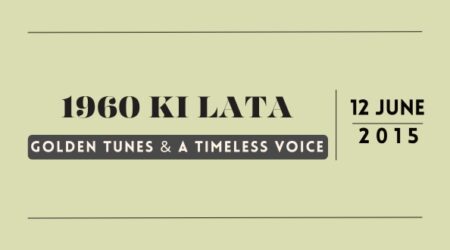
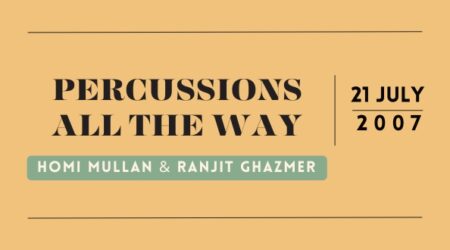
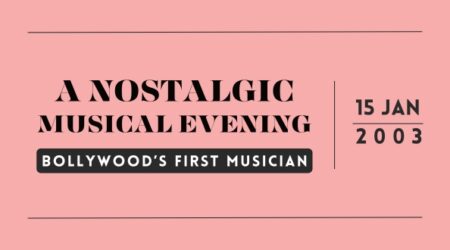
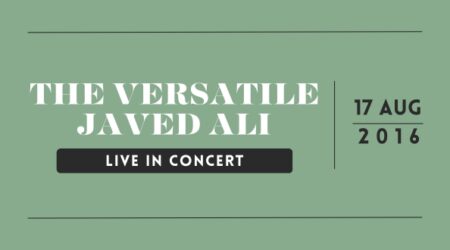
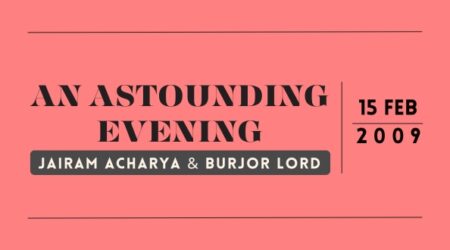
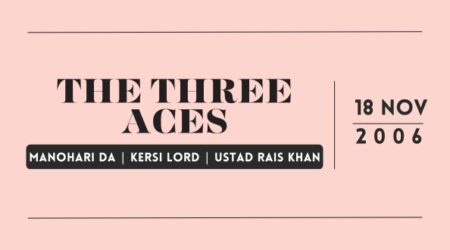

Leave a Reply